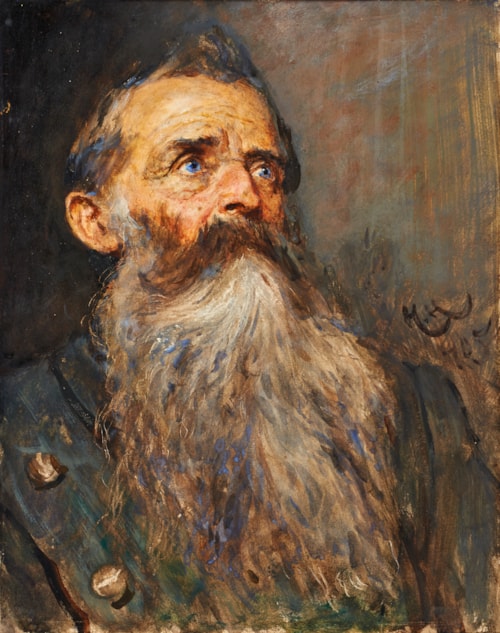
Hubert von HERKOMER
Waal 1849 - Budleigh Salterton 1914
Biography
Born in a small Bavarian village near Munich, Hubert Herkomer emigrated with his family to America in 1851 but returned to Europe to settle in Southampton in England in 1857. He received a rudimentary training from his father, a woodcarver, and studied at the Akademie in Munich from 1865 and then at the South Kensington Schools in London. Herkomer began his career as an illustrator, providing a series of scenes of contemporary urban and rural life for The Graphic magazine throughout the 1870s, popular images that first established his reputation. Herkomer’s earliest independent paintings were genre scenes – of both London and Bavarian subjects - and portraits, and soon earned him considerable success. He made his home in the town of Bushey in Hertfordshire in 1873, establishing his studio there, and in 1883 he founded an art school in the town, attracting a large number of artists to the area. From 1870 he would also spend several months each year in Germany, becoming friendly with such artists as Adolph von Menzel. Elected to the Royal Academy in 1890, Herkomer exhibited there regularly, and also showed at the Grosvenor Gallery and the New Gallery in London, as well as in Paris, Vienna, Munich, Berlin and Hamburg. An excellent portraitist, he depicted many of the most eminent persons of the day, including fellow artists such as John Singer Sargent and John Ruskin, whom he succeeded as Slade Professor at Oxford in 1885. Between 1882 and 1883 and again in 1885 and 1886 he spent several months in America, where he received several significant portrait commissions. By the turn of the century Herkomer was firmly established as one of the most famous painters of the Victorian era, and a celebrity in both England and Germany. Ennobles by the German Emperor in 1899, after which he added the prefix ‘von’ to his surname, and knighted in England in 1907, he published his memoirs in 1910, four years before his death. Although best known today as an artist, Herkomer was also a musician and composer, a pioneering filmmaker - producing costume dramas accompanied by his own music - and a motor racing enthusiast.




